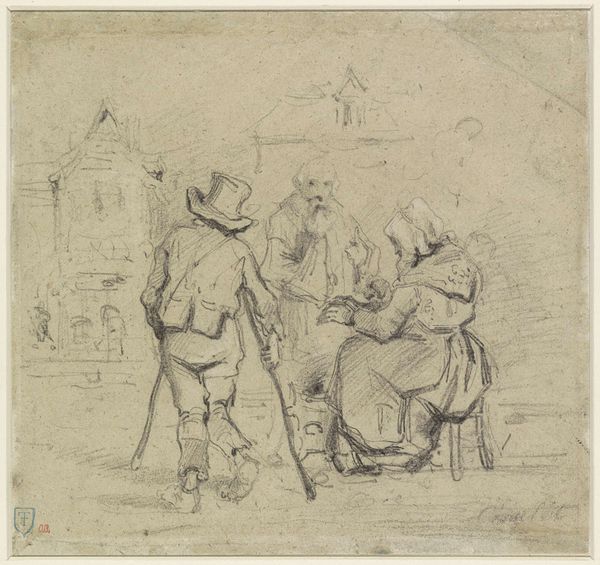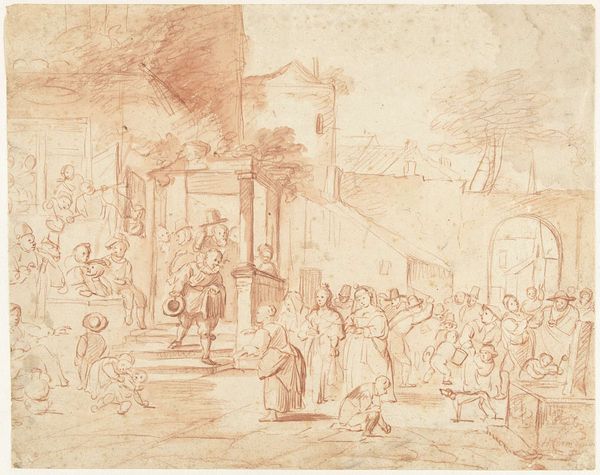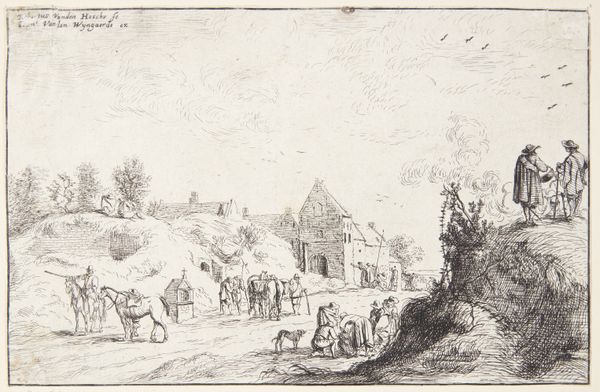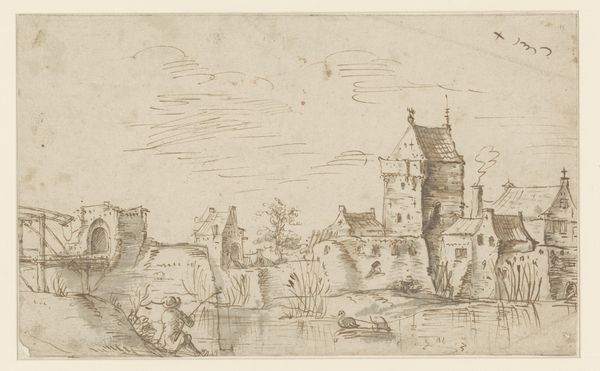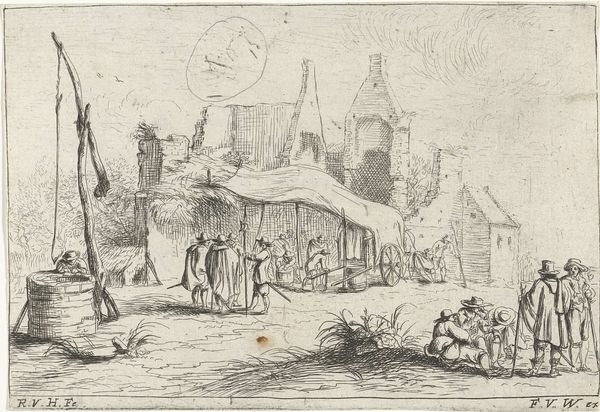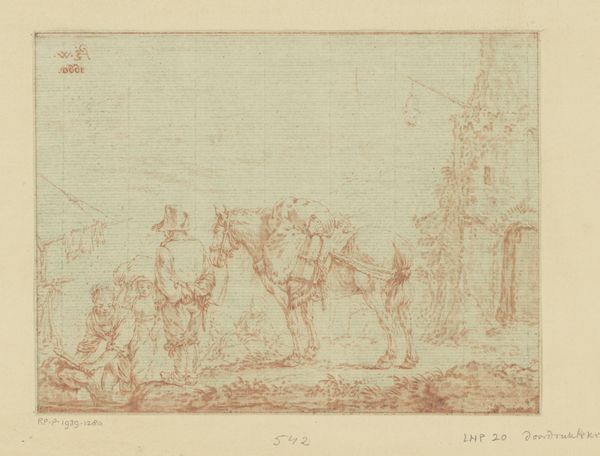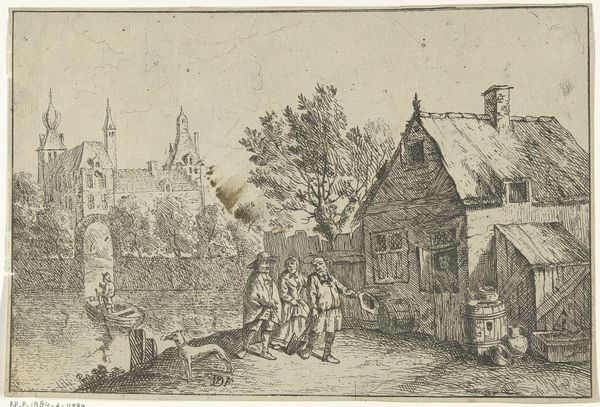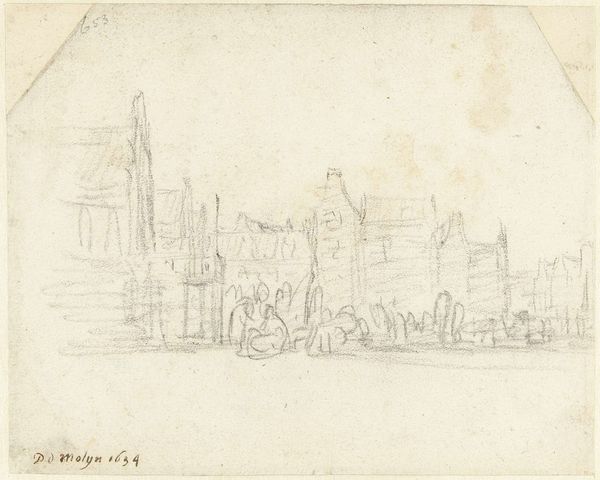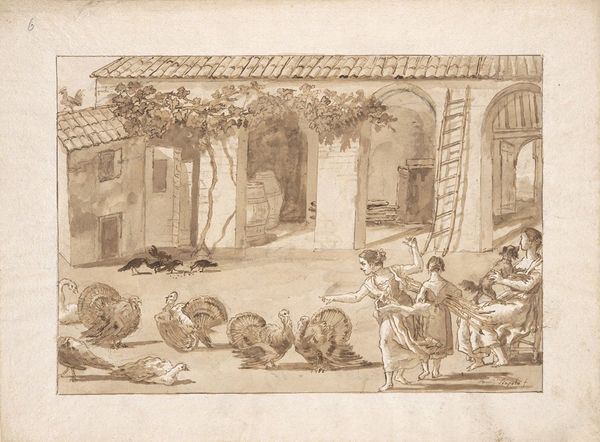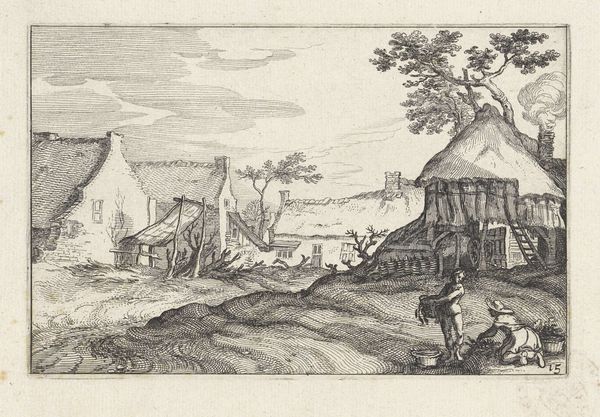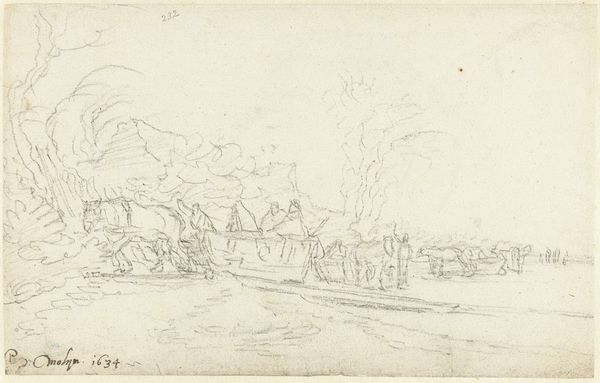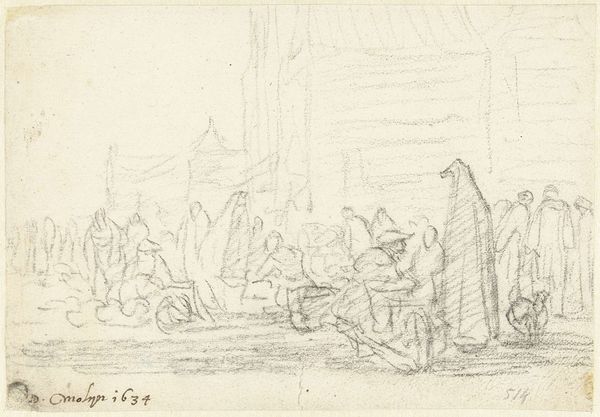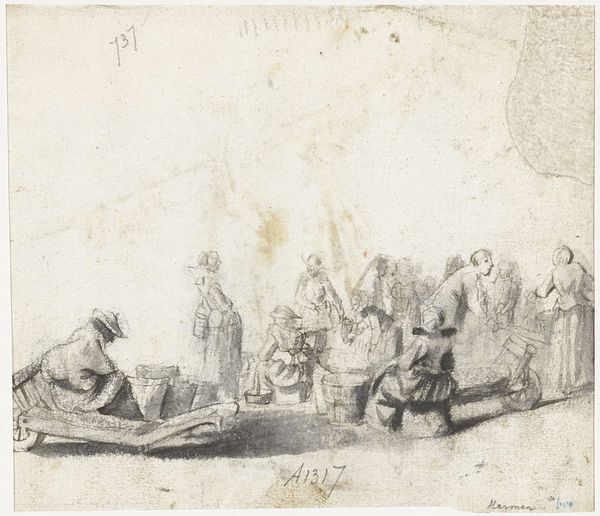
drawing, pencil
#
drawing
#
quirky sketch
#
dutch-golden-age
#
pen sketch
#
landscape
#
form
#
personal sketchbook
#
sketchwork
#
ink drawing experimentation
#
group-portraits
#
pen-ink sketch
#
pencil
#
line
#
pen work
#
sketchbook drawing
#
cityscape
#
genre-painting
#
storyboard and sketchbook work
#
sketchbook art
#
realism
Dimensions: height 165 mm, width 191 mm
Copyright: Rijks Museum: Open Domain
Editor: This is Gerard ter Borch the Younger's "Markttafereel," a drawing from 1634 held at the Rijksmuseum. It's so delicate and fleeting—like a quick glimpse into 17th-century market life. What stands out to you in this piece? Curator: It’s fascinating how ter Borch captures the energy of the marketplace with such minimal detail. The lines, though spare, speak volumes. Notice the repeated arch form—present in the architecture, the market stalls, even the bent postures of the figures. Do you see how this motif ties the chaotic scene together, giving it a sense of formal harmony? Editor: I do! It’s like the arch is a visual echo repeated throughout the whole drawing, connecting all the elements, like the stalls, figures, and the buildings in the background, too. I also wonder what the purpose of creating the arches was, functionally. Curator: Exactly. These arches aren't merely decorative. They echo through the ages – from Roman aqueducts symbolizing civic life to religious arches denoting sacred spaces. Here, ter Borch subtly imbues the mundane marketplace with a similar symbolic weight, elevating the everyday hustle to something almost…ritualistic. Editor: So, beyond just depicting a scene, it's about connecting the market and daily life to a broader visual language and legacy? I initially saw this drawing as just a moment in time, but there’s a visual symbolism that ties the imagery together! Curator: Precisely! By employing this age-old motif, the artist not only visually organizes the image, he alludes to the continuous historical echoes in how we engage in commerce, gather, and construct our cities, reflecting culture and continuity. Editor: That’s incredible. I'll definitely look at drawings differently now. Thanks so much!
Comments
No comments
Be the first to comment and join the conversation on the ultimate creative platform.
